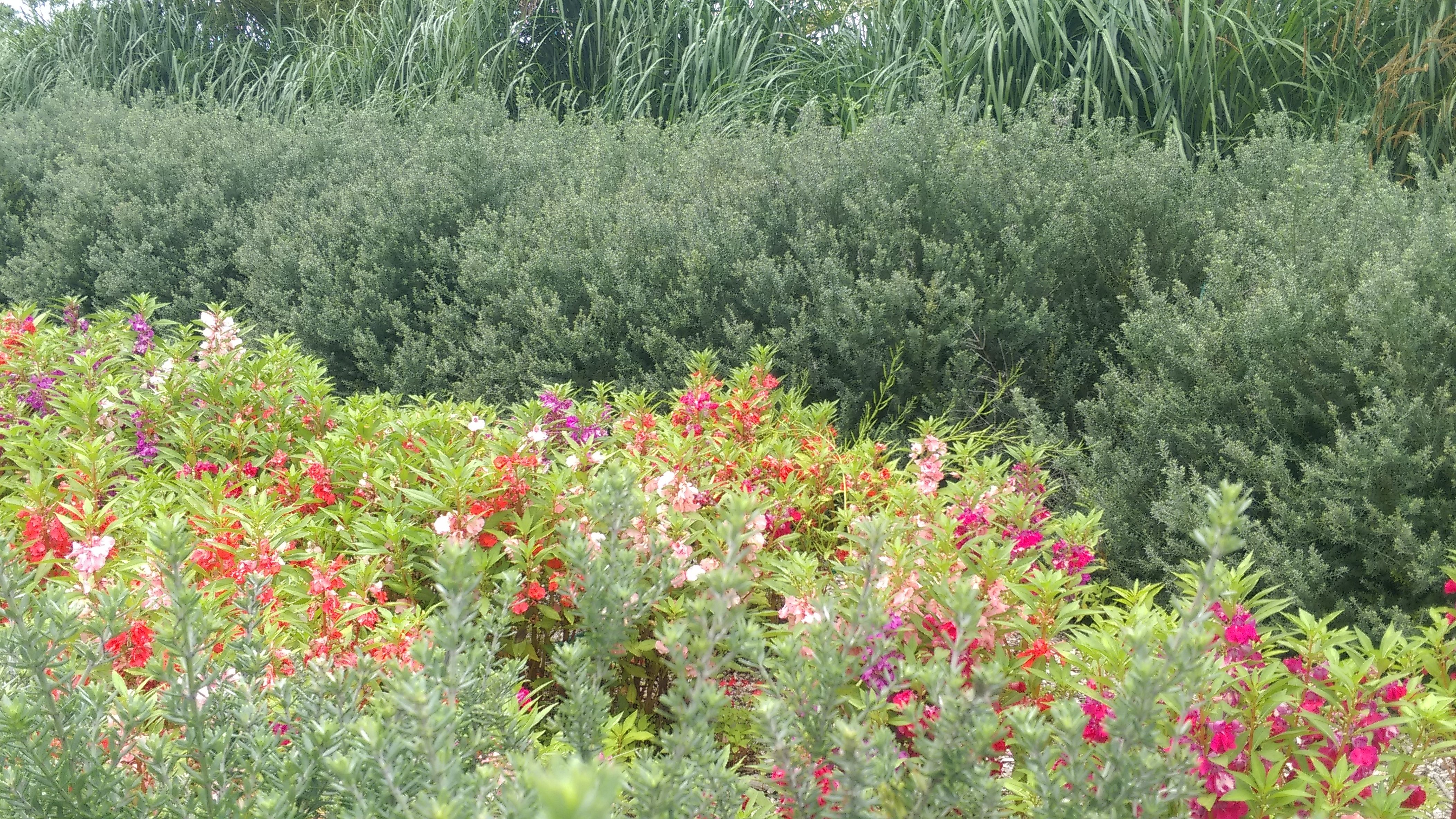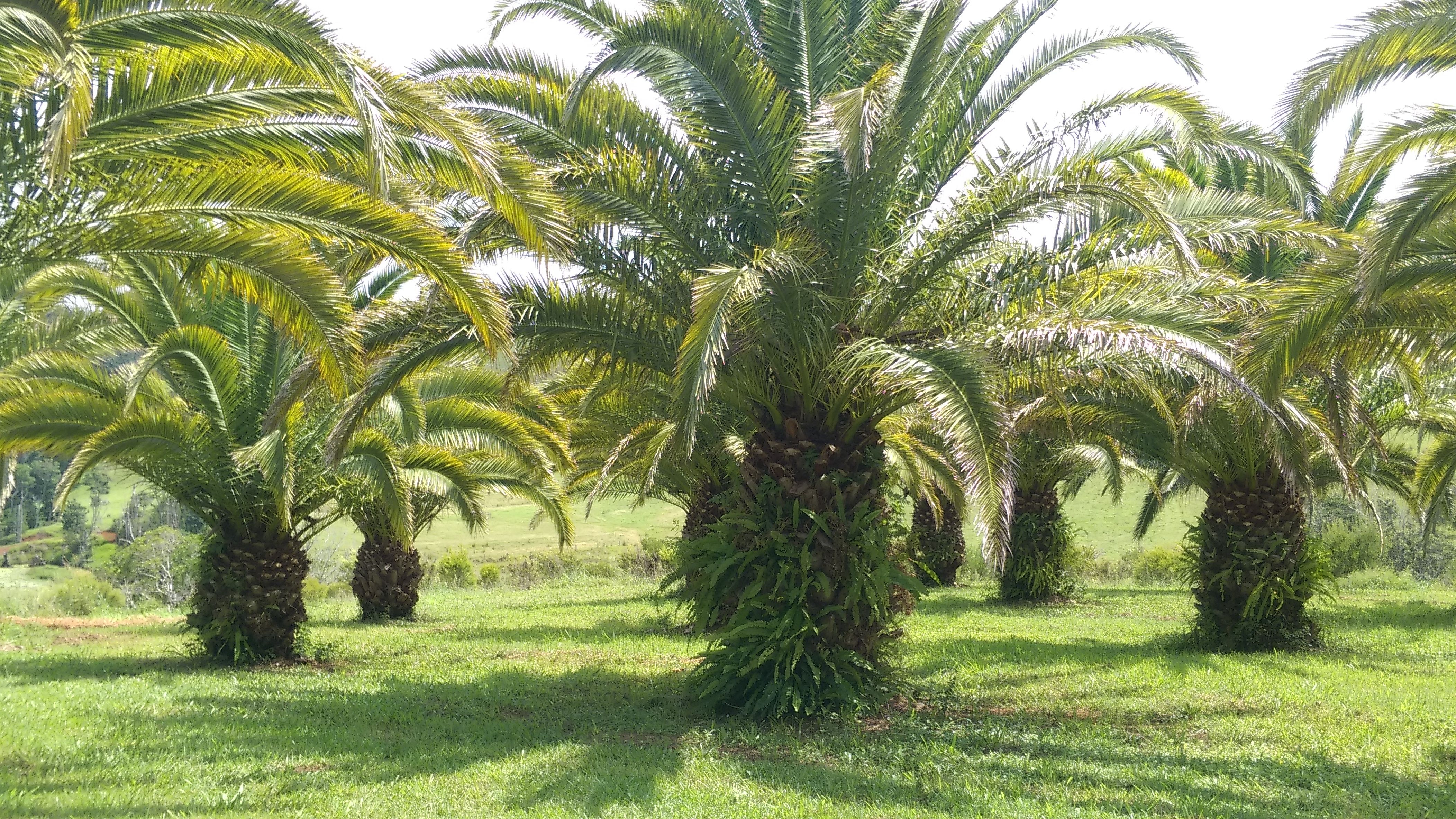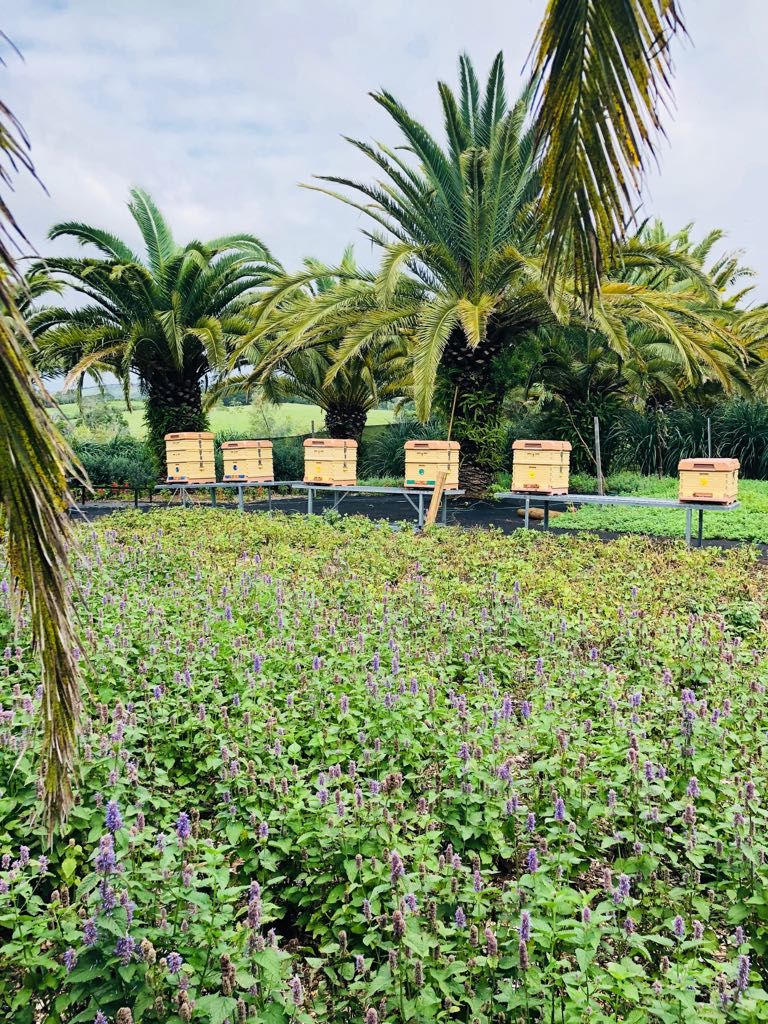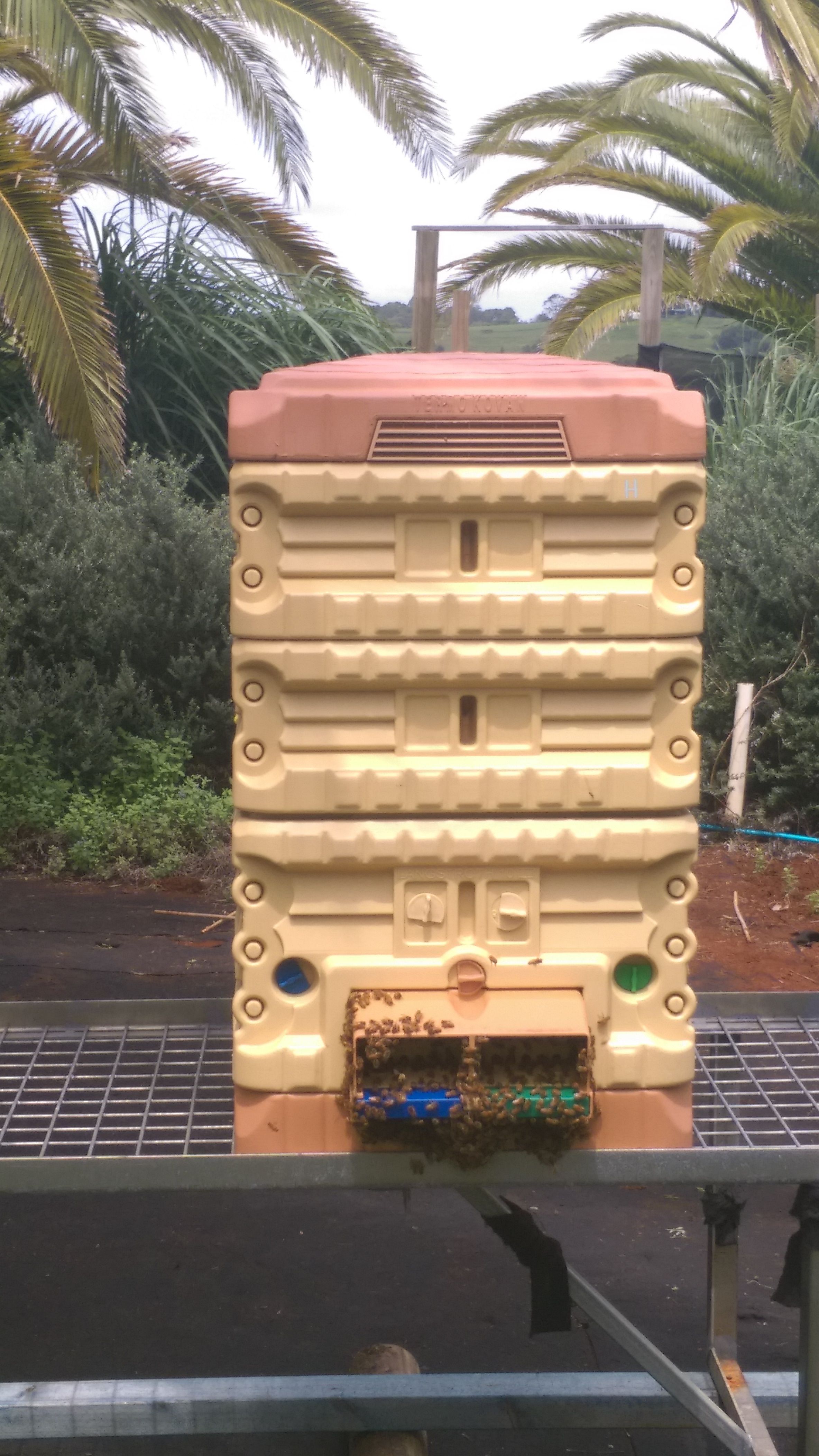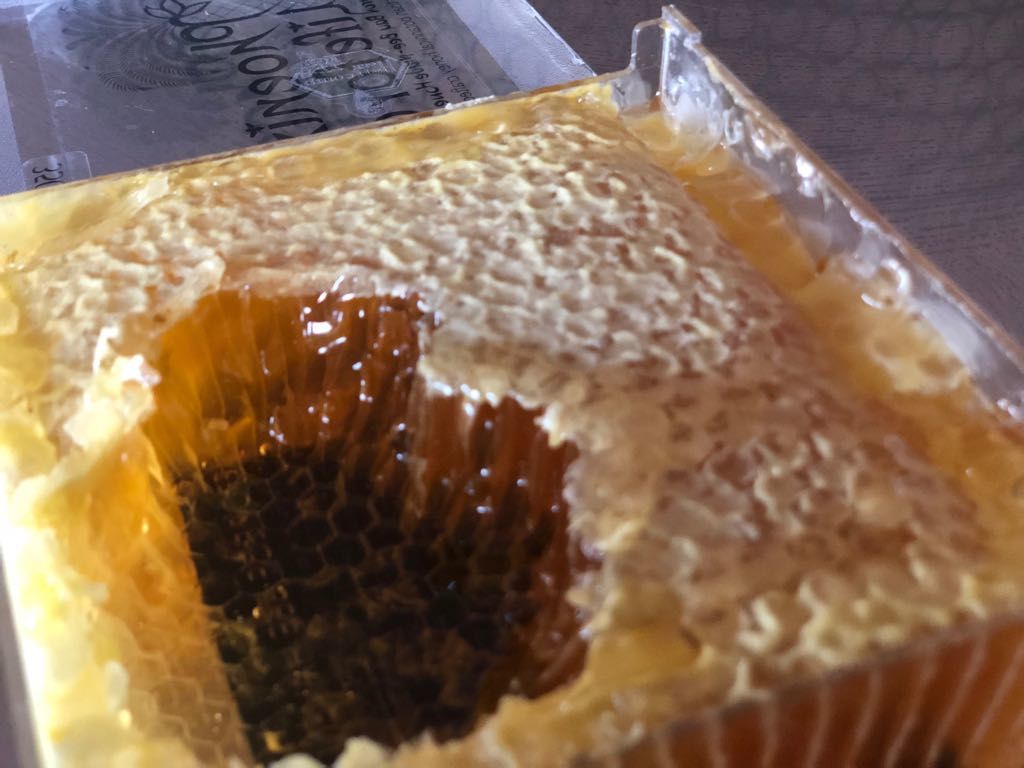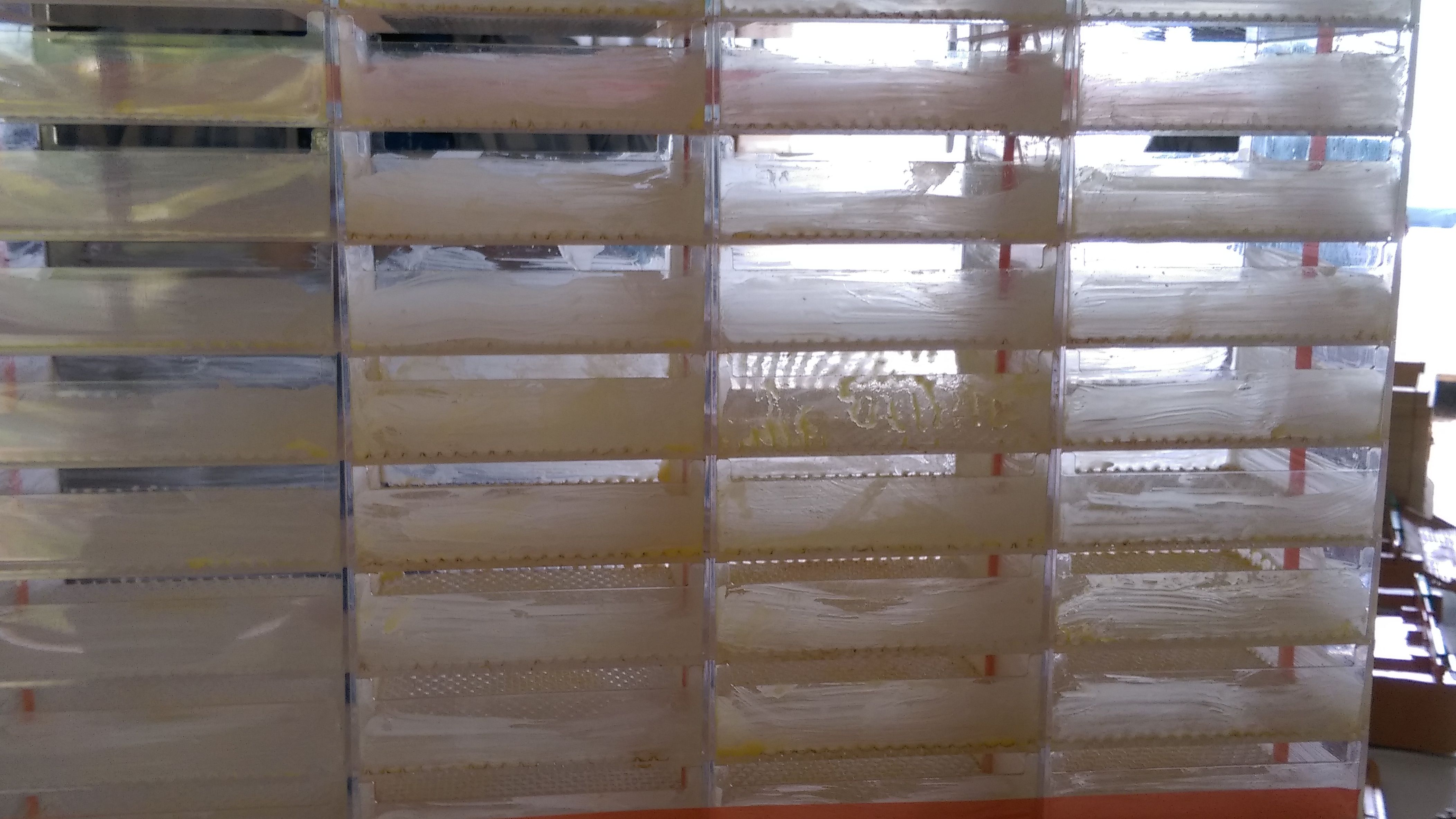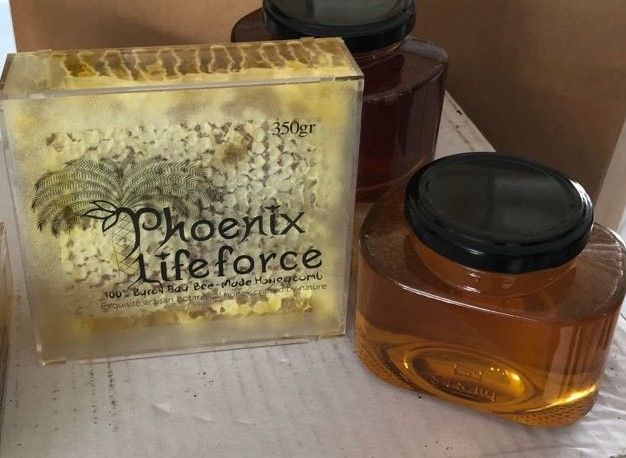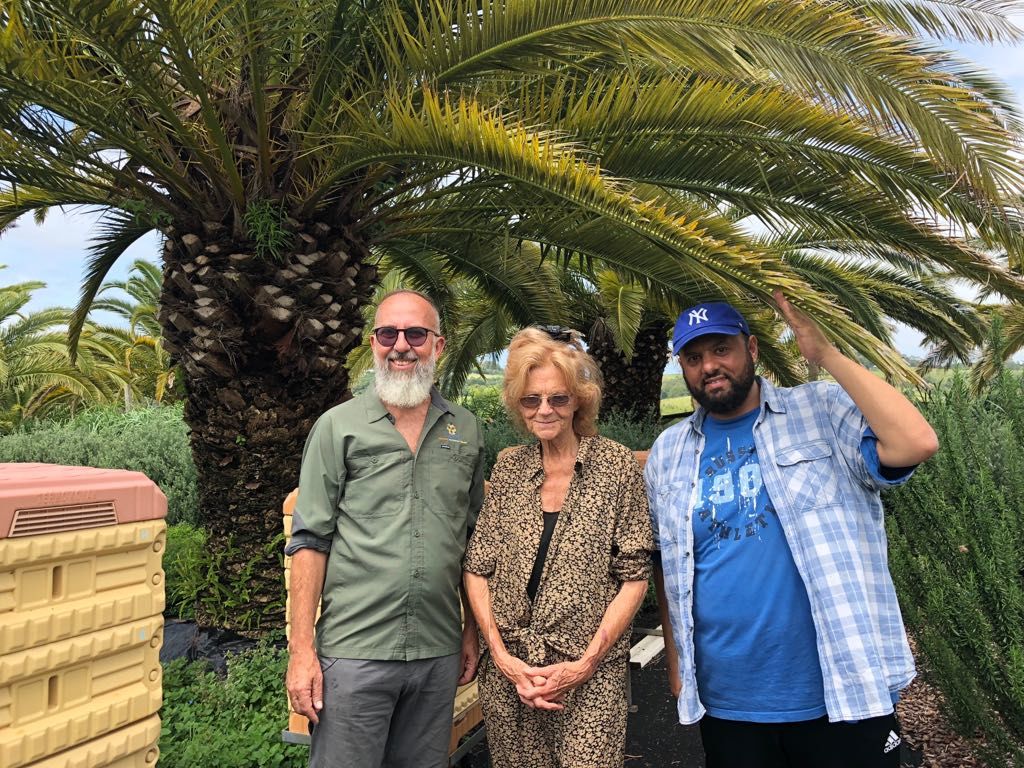I meet amazing people on my travels around the world and they all have a story to tell. From time to time you meet someone so extraordinary they make a real impact. Gabrielle Morley is one of those people. I visited her property in New South Wales, Australia with the team from Gather By (to taste Australian Medicinal Honey).
She has a background in cotton farming but she left that behind to buy land and settle in NSW. There, she grows over a 1000 Phoenix date palms for commercial sale. Fascinated by the tree and discovering its nutritious pollen is highly medicinal (Ayurvedic doctors use this to help with many health problems including fertility issues) she started working with bees to save her the labour of harvesting the pollen. That was three years ago and Gabrielle has fallen completely under the spell of working with bees. It took some time to produce her raw honey because she put all the work into building up the bees health and creating the most amazing apiary that I would say comes close to paradise for bees. Her attention to detail creating the best environment for bees to thrive is incredible.
- Diversity of herbs planted by Gabrielle
- Shady palms
A paradise for bees
As you walk across Gabrielle’s land you see Mexican heather, bergamot, rosemary, turmeric, lemon balm, lavender, and mustard to name just a few of the herbs that she grows. She explains the healing properties of the plants for her ‘chemists’ – the bees – like the highly medicinal, native balsam that is completely edible. You may notice the word on shampoo bottles and conditioners. This is the plant, and in Asia the roots are dried and used to treat snake bites. Its a clever one, balsam, as it is rain-protective so when the bees come out in the morning after a rainy night they can still retrieve their nectar as opposed to many other plants that lose theirs after wet weather. It has multicoloured flowers and is often called “touch me not” as its many seed pods will burst when brushed or touched. Gabrielle has carefully curated the land so there is food for all seasons and with so much nectar for the bees to forage on and so many varieties, I honestly have never seen an apiary like it.
She explains how important it is for bees to have a balanced diet of lipids, fats and proteins and she watches the bees through the day to see which flowers and plants they go to and at which times for their medicinal needs and for nectar flow. She mainly has indigenous plants and self seeding as much as possible. Gabrielle currently has just 30 hives, but what she does produce is a high value, organic honey due to the diversity of nectar and health of the bees and plants – the antithesis of industrial or bulk honey production.
- Gabrielle Morley’s apiary
- One of Gabrielle Morley’s hives
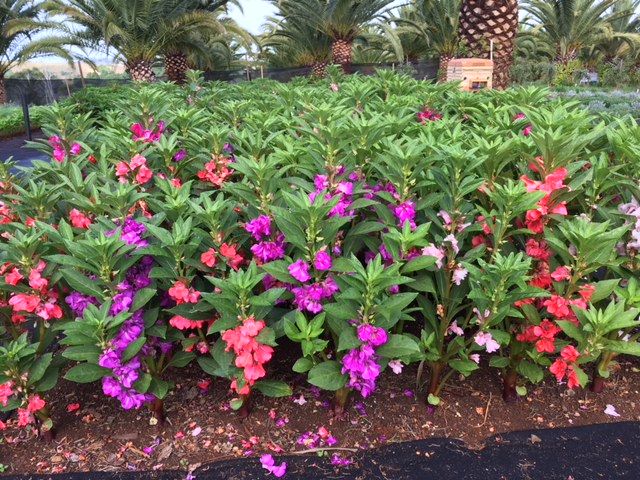
Beautiful balsam for the bees to forage
Planting for bee health
Gabrielle has invested a lot in her bees and is a fount of knowledge. She did so much research starting out and only the best practice will do for her. After looking all over the world she decided on buying her hives from Turkey which has a strong honey culture. The government there invested in nine universities to do the research into the best hive environment and bee health.
There is a pollen trap at the back of the hive where the honey is harvested (as opposed to the front which is the usual way). This is so the bees are not disturbed. They enter from the bottom of the hive and go upstairs to produce their honey. Debris falls down and is easy to clear and clean. These bee ‘palaces’ are anti-microbial, anti-bacterial and work well in the heat and the cold. She doesn’t use spinning machines to separate her honey but cold presses by hand. She explains that this process keeps the honey oxidized and alive and so producing a better end product and could be done for up to 200 hives.
Gabrielle brought out these boxes to show me which get filled with honeycomb. They are in the hive and so the honeycomb never gets touched by human hands before the consumer uses it. I love this and in fact I have just started stocking some very similar at Balqees.
- Some of Gabriel Morley’s beautiful honeycomb
- The boxes at Gabrielle Morley’s apiary which get filled with honeycomb
Food as medicine
So what we have here are incredibly healthy bees as they are feeding on the medicinal herbs and plants which transfers to the honey and then the consumer. This also helps the bees become resistant to disease. Gabrielle says there has only been a little issue with hive beetle which she treats naturally with lemongrass. She puts it under the hive or around it, on the ground, and cuts it to release its oil. This gets rid of the beetle naturally and keeps her practice organic.
- Phoenix Life Force honey and honeycomb
- Gabrielle Morley, Matt Blomfield from Gather By, and Riath Hamed of Balqees
Pollinator havens
Gabrielle’s work is expanding and ever evolving and now she has partnered with Gather By she has planted 3,000 manuka plants or leptospurmum to build on the medicinal value of her honey and contribute to Australia’s medicinal honey story. I could have spent hours talking to Gabrielle and I will definitely be sharing more of her stories and insights here in the future. She has amazing knowledge of palm tree pollen, the history and the healing. Let me know in the comments if you’d like to know more about this amazing beekeeper.



